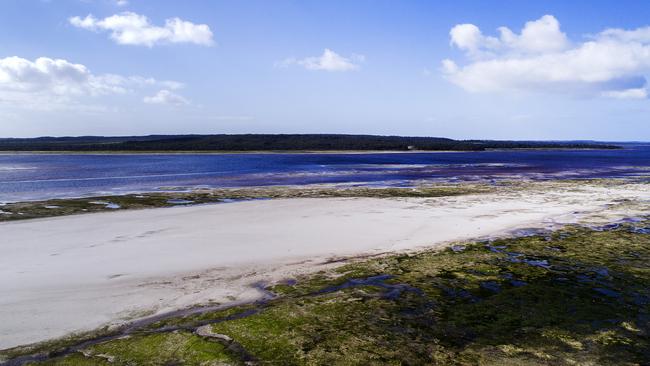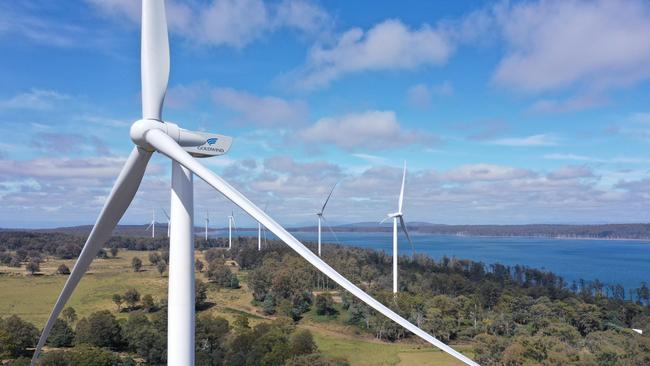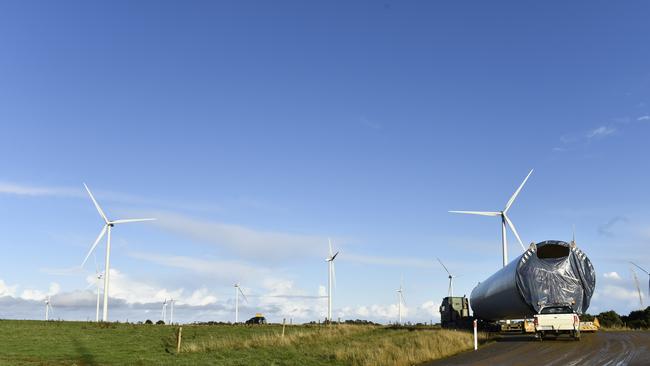GPS trackers to be fitted to wedge-tailed eagles at Robbins Island before wind farm site decided
GPS trackers will be fitted to wedge-tailed eagles at the site of a proposed wind farm before the energy company decides where it will erect the turbines.
News
Don't miss out on the headlines from News. Followed categories will be added to My News.
GPS tracking devices will be fitted to two wedge-tailed eagles on Robbins Island to plot their flight paths before an energy company decides where it will erect the turbines at its proposed wind farm.
The technology was also used when the Musselroe wind farm was established in the state’s northeast.
“We’ve been working with Dr James Pay of the University of Tasmania and plan to fit GPS trackers to two resident wedge-tailed eagles on Robbins Island. By doing this we’ll better understand eagle behaviour and flight paths which will help determine where the turbines will be located on the island,” a UPC Renewables spokesman said.
The company – which plans to build a more than 160-turbine wind farm on the island off the state’s North-West – says the tracking will also feed into a statewide count of eagle numbers.
The Tasmanian public will be able to give their feedback on the Robbins Island wind farm project in the new year.
The wind farm will be part of an energy park.

So far the firm’s Jims Plains proposal has been given the green light by the Australian government and the development application for the island project is now being assessed by the Circular Head Council.
Local resident and former independent political candidate Craig Garland said the proposed wind farm would impact not only birds but fisheries, farmers, Aboriginal sites of significance and the community.
“Tasmanians take all the risk, UPC takes none. All the benefits flow north,” he said.
“The Hammonds, who own Robbins Island, will make millions and a foreign company gets the profits. This wind farm is not in Tasmania’s interests.”
UPC Renewables is also finalising the route of its massive transmission line which will carry power from the energy park to Hampshire and then to Staverton, near Sheffield, to be fed into the grid.
The company said plant, animal and Aboriginal heritage field surveys along the transmission line route were almost complete and development applications to three council areas – Circular Head, Waratah-Wynyard and Burnie – would be lodged in early 2021.
UPC Renewables says it has engaged Tasmanian company Indicium Dynamics to fit remote cameras and sensors to the eagle nests on Robbins Island and the eagle nest closest to Jims Plain.
“Our ‘eagle eyes’ allow us to detect activity in real-time, indicating how active a nest is and if breeding is successful,” it said. The company is also investigating the use of bird detecting technologies, such as radar and cameras, to minimise any collisions.
Tasmania hits 100 per cent renewables target early
A WIND farm on Tasmania’s West Coast is now working at full output producing enough electricity to power 46,000 houses.
Granville Harbour Wind Farm announced on Friday that specialist construction crews had completed the installation and energisation of the farm’s turbines, boosting the volume of clean energy dispatched to the National Energy Market and helping Tasmania achieve its 100 per cent renewable energy target two years early.
The farm’s 29th turbine has been commissioned and the last two are going through final certification.
Project Director, Lyndon Frearson said it was exciting to see the energisation of the 112MW wind farm with final completion just weeks away.
“We’ve been impressed with the quality and reliability of the wind at Granville Harbour and to see output from the wind farm regularly exceeding 90 per cent of the wind farm’s projected capacity now that all turbines have been completed has been fantastic,” Mr Frearson said.

Since the wind farm first generated energy to the grid on February 27, it has produced over 170GWh of renewable energy.
“For Granville Harbour Wind Farm to be the actual catalyst for Tasmania achieving its 100 per cent renewable energy target two years ahead of schedule is a remarkable outcome, and one that everyone involved with its development should be very proud of.”
Up to 200 construction personnel were based at the project site, about 35km North West of Zeehan, during the 2.5-year construction phase.
A team of six permanent personnel will be recruited to operate and maintain the wind farm over its expected 25-year lifespan.
Resources Minister Guy Barnett said all Tasmanians should be proud that this state was the first in Australia – and one of only a handful of jurisdictions in the world – to achieve this target.

“Tasmania has what the nation wants and needs in affordable, reliable and clean renewable energy, and this confirms we are seizing our State’s immense renewable energy potential to help grow our economy and create jobs, many in regional areas,” Mr Barnett said.
“But there is more to do, which is why we have set a target to double our renewable generation to a global-leading target of 200 per cent of our current needs by 2040 – which we recently passed into law following the passing of legislation through both Houses of Parliament.
“We are also continuing to progress the Marinus Link and Battery of the Nation projects that represent an intergenerational opportunity to make Tasmania a global leader and the renewable energy powerhouse of Australia.”


